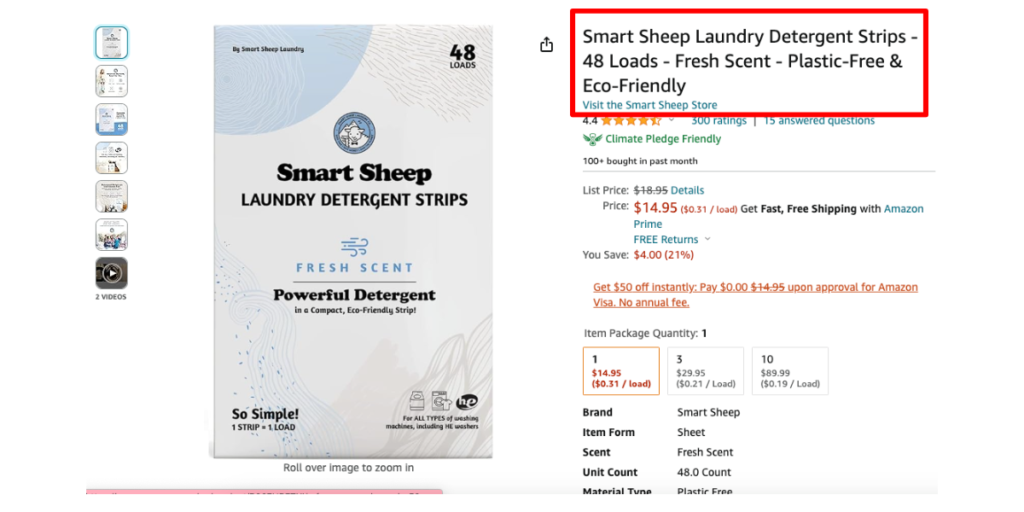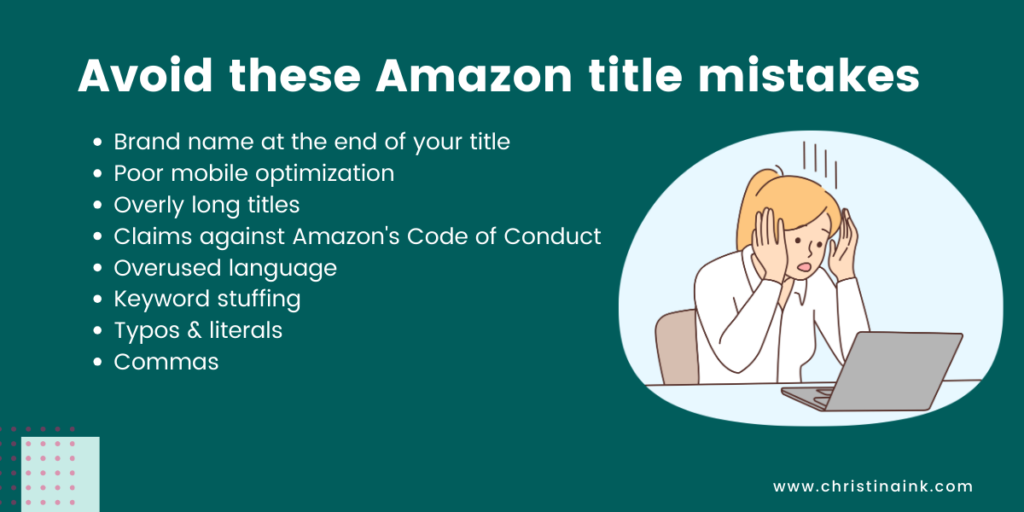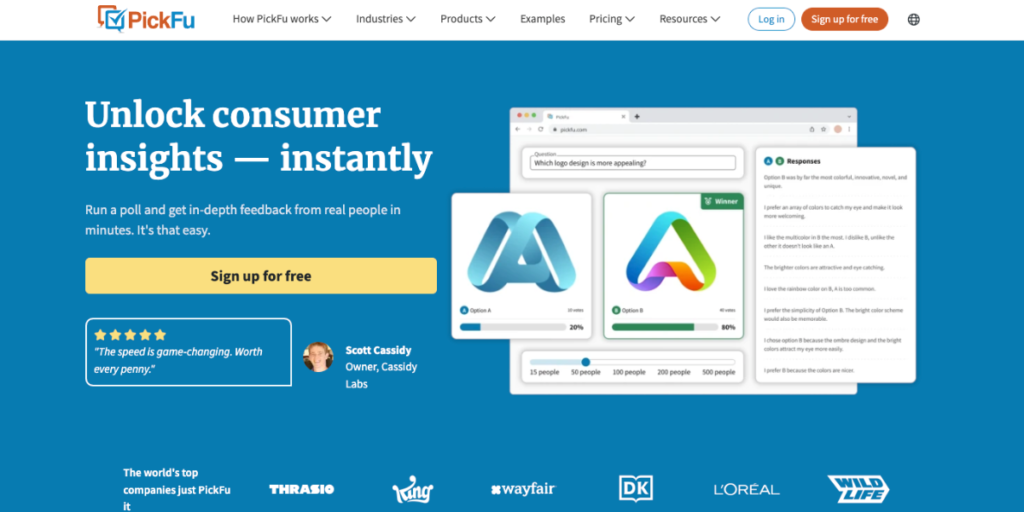Even if you pour your heart and soul into your Amazon listing, without Amazon product title optimization, you’ve got little chance to rank and outsell your competition. That’s how important your title is to boosting visibility and sales on Amazon.
Crafting a compelling and effective product title can significantly impact visibility, click-through rates, and, ultimately, sales. But it’s not enough to jam the top keywords in your title. You need to know how to nurture your audience with the most persuasive copy, all while staying within Amazon’s strict code of conduct. Gone are the days of keeping effective Amazon product title optimization a secret. In today’s post, we’re unlocking the exact steps you need to take to optimize your Amazon product title. Let’s get started.
How is the Amazon FlyWheel Effect Relevant To Title Optimization?
The Amazon Flywheel Effect is a business strategy and concept coined by Amazon’s founder and CEO, Jeff Bezos. It describes the interconnected and self-reinforcing cycle that propels Amazon’s own business growth and is a term commonly leveraged in the Amazon community when discussing success on the marketplace. The concept is illustrated as a flywheel, a mechanical device that stores rotational energy and builds momentum over time– much like your Amazon business.
Here are the most important criteria to enact the Amazon Flywheel Effect:
- Product Listing Optimization
- Customer Satisfaction
- Positive Reviews and Ratings
- Increased Sales Volume & Product Selection
- Amazon’s Choice and Best Seller Badges
- Buy Box Eligibility
- Expanded Product Selection
- Brand Loyalty
- Advertising and Promotions
- In-stock Rates
- Continuous Improvement
By aligning your Amazon seller strategy with the principles of the Flywheel Effect, you can create a self-reinforcing cycle of success. Prioritize customer satisfaction, continually optimize your listings, and strategically expand your product offerings to leverage the full potential of the Amazon marketplace.
What is Amazon Product Title Optimization?
Amazon product title optimization is the strategic process of crafting product titles on the Amazon marketplace to enhance visibility, attract potential customers, and ultimately drive sales. It involves the careful selection and placement of relevant keywords that align with customer search queries, ensuring that the title accurately represents the product’s key features and benefits. A well-optimized product title on Amazon not only improves search engine rankings but also contributes to a positive customer experience by providing clear and concise information.

Fig. 1.0 Example Amazon Title: Brand Smart Sheep
Balancing keyword inclusion, character count, and unique selling features is crucial for maximizing the effectiveness of the title and staying competitive in the dynamic e-commerce landscape. Amazon product titles are a key driver for visibility and should not be overlooked.
How Do I Optimize My Amazon Listing Title?
Discover some additional best practises for Amazon title optimization below.
#1 Readable Title with Power Words: New sellers tend to keyword stuff titles, and some agencies recommend keyword stuffing. But sometimes less is more. Leverage readable content with strategic keywords that can be scanned quickly. Use power words within Amazon’s Code of Conduct (avoid sales copy) to try and elicit a response from shoppers.
Unlock a few examples of power words below:
- Irresistible
- Unleash
- Unlock
- Frontrunning
- Stunning
- Stress Free
- Powerful
- Supercharge
- Kid-Durable
- Transform
- Game Changing
- Restore
- Striking
- Harmonious
#2 Front-Load Important Information: Place crucial information, such as key features and benefits, towards the beginning of the title. This ensures visibility, especially on mobile devices.
#3 Leveraging Strategic Keywords Begin your title with the most essential keywords, but don’t go overboard. Keep it simple with strategic keywords, highly relevant while still maintaining readability. Try different keyword tools like Keywords Everywhere or DataDiveTools.
#4 Speak to the Right Market: You may think the language you use in a title doesn’t have an impact, but if your tone doesn’t translate well to your target market, you’re less likely to convert. Consider your ideal buyer in the tone of your tile, like GenZ, Millennials and more.
#5 Prioritize Relevance: While it’s crucial to include keywords, it’s equally important to maintain relevance. Amazon’s algorithm prioritizes titles that accurately describe the product. Ensure your title provides a clear and concise representation of what you’re selling.
#6 Include Unique Selling Points (USPs): Highlight the unique features and benefits of your product within the title. This not only attracts potential customers but also differentiates your listing from competitors.
#7 Mindful Character Count: Amazon recommends keeping product titles between 60-80 characters. Character counts vary by category and most sellers tend to leverage the full 200 characters. Adhering to less characters means, you can optimize your title for both desktop and mobile users, providing a seamless shopping experience.
#8 Understand Amazon’s Requirements: Before you start drafting your Amazon title, its important to understand what amazon allows and doesn’t. Review Amazon’s Product title guidelines. From character counts, to language and inadvertent claims. Read amazon’s policy before optimizing your tile.
#9 Consider Commas and Bars: While adding commas to Amazon product titles can enhance clarity and readability some Amazon experts maintain commas can negatively impact keyword optimization. Avoid excessive punctuation and adhere to Amazon’s guidelines Consider the mobile shopping experience and aim for a well-organized title that effectively communicates key details about your product. Try bars (\) or commas, but use one or the other and strategically.
#10 Regular Audits: Regularly audit your product titles to ensure they remain relevant and within Amazon’s Code of Conduct to meet customer trends and search patterns.
What to Avoid When Optimizing Your Amazon Product Title

By avoiding these common mistakes, you can not only boost your search visibility but also create a positive and trustworthy shopping experience for potential customers.
Here are 9 things to avoid when optimizing Amazon product titles:
#1 📈 Excessive Keywords: Avoid stuffing your product title with excessive keywords, as it can make the title appear spammy and confusing to customers.
#2 🅰️ ALL CAPS: Refrain from using all capital letters in your product title, as it can be considered as shouting and may negatively impact the overall user experience.
#3 🚀 Special Characters: Contrary to what you see on Amazon, emojis are not within the Amazon style guides. Steer clear of using special characters or symbols, as they can create formatting issues and cans see your listing surpassed.
#3 🦹 Misleading Information: Do not include information that is misleading or inaccurate. A clear and honest representation of your product is essential for building trust with customers. Small inaccuracies like describing a product is large can cause an increase in returns and leave customers unhappy.
#4 💬 Promotional Language: Avoid using overtly promotional language like “buy now” or “add to cart” as it may violate Amazon’s policies and could lead to penalties.
#5 ✖️ Irrelevant Keywords: Exclude irrelevant keywords that do not accurately describe your product. Focus on terms that potential customers are likely to use when searching.
#6 📏 Long Sentences: Keep your product title concise and to the point. Lengthy sentences can be overwhelming and may get cut off on certain devices.
#7 🔚 Brand Name at the End: Place your brand name near the beginning of your title to ensure it’s visible in search results. Avoid burying it at the end where it may go unnoticed, or where Amazon may remove it and place it at the beginning ruining your title formation.
#8 🧑🤝🧑 Me-Too Copy: Steer clear of overused terms like “unique” or “high-quality” unless your product genuinely stands out. Use specific details to highlight what sets your product apart.
#9 💾 Inconsistent Formatting: Maintain a consistent format across your product titles. Inconsistent formatting can make your listings appear unprofessional and may impact customer trust.
How to Leverage Artificial Intelligence to Optimize Your Amazon Title
Here are some ways you can employ AI to optimize you Amazon product title:
- Competitor Analysis: AI can analyze competitor product titles and identify keywords they are ranking for, providing insights for your optimization strategy.
- Language Translation: For sellers targeting international markets, AI-powered language translation can help optimize product titles in multiple languages, ensuring effective communication with diverse audiences.
- Visual Content Analysis: AI-driven image recognition can analyze product images to identify key features and attributes. This information can be used to optimize the textual elements of the product title for a more comprehensive representation.
While AI can automate and enhance certain aspects of Amazon product title optimization, human oversight and strategic decision-making remain crucial. Combining the analytical power of AI with human intuition can result in more effective product titles that remain within Amazon’s code of conduct.
Don’t Forget to A/B Test Your Amazon Product Title

Fig. 1.2 PickFu Split Testing Service
A/B testing is a dynamic strategy for refining Amazon product titles, and platforms like PickFu offer a great execution of this process. With A/B testing you can present different title variations to your target audience to ensure a randomized presentation for accurate insights. By tracking key performance indicators and soliciting look-alike customer feedback through, you can analyze the results to make informed decisions about product title optimization. This iterative approach allows you to continually fine-tune titles based on data-driven insights, ultimately enhancing visibility, click-through rates, and conversion.
How to Spilt Test Your Amazon Title with PickFu
Optimize Your Title for Conversion
From understanding the intricacies of Amazon’s title requirements to the importance of customer-centric language, persuasive copywriting and readable text, every element plays an important role in ensuring your title stands out and resonates with your target audience.
As the Amazon Flywheel Effect comes into play, the iterative nature of optimization becomes not just a strategy but a dynamic force propelling you towards sustained success. With these insights and tools in hand, you’ll be better armed to navigate the competitive Amazon marketplace.
What are your biggest Amazon title Do’s and Don’ts? Tell us about your title optimization strategy in the comments.


LIKE THIS ARTICLE?